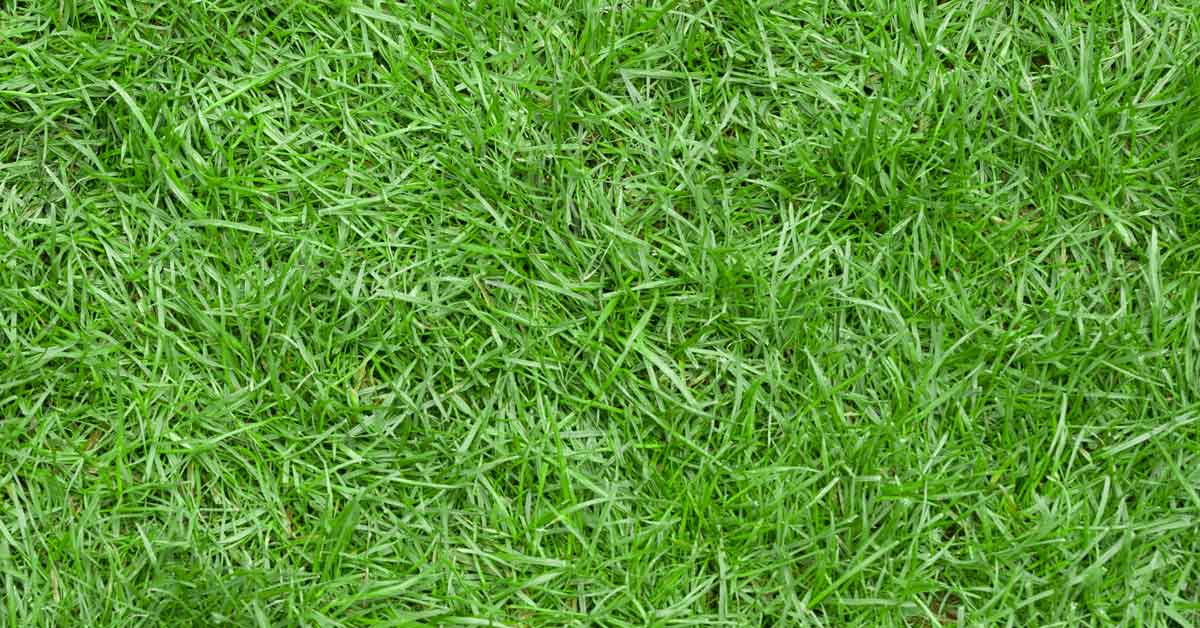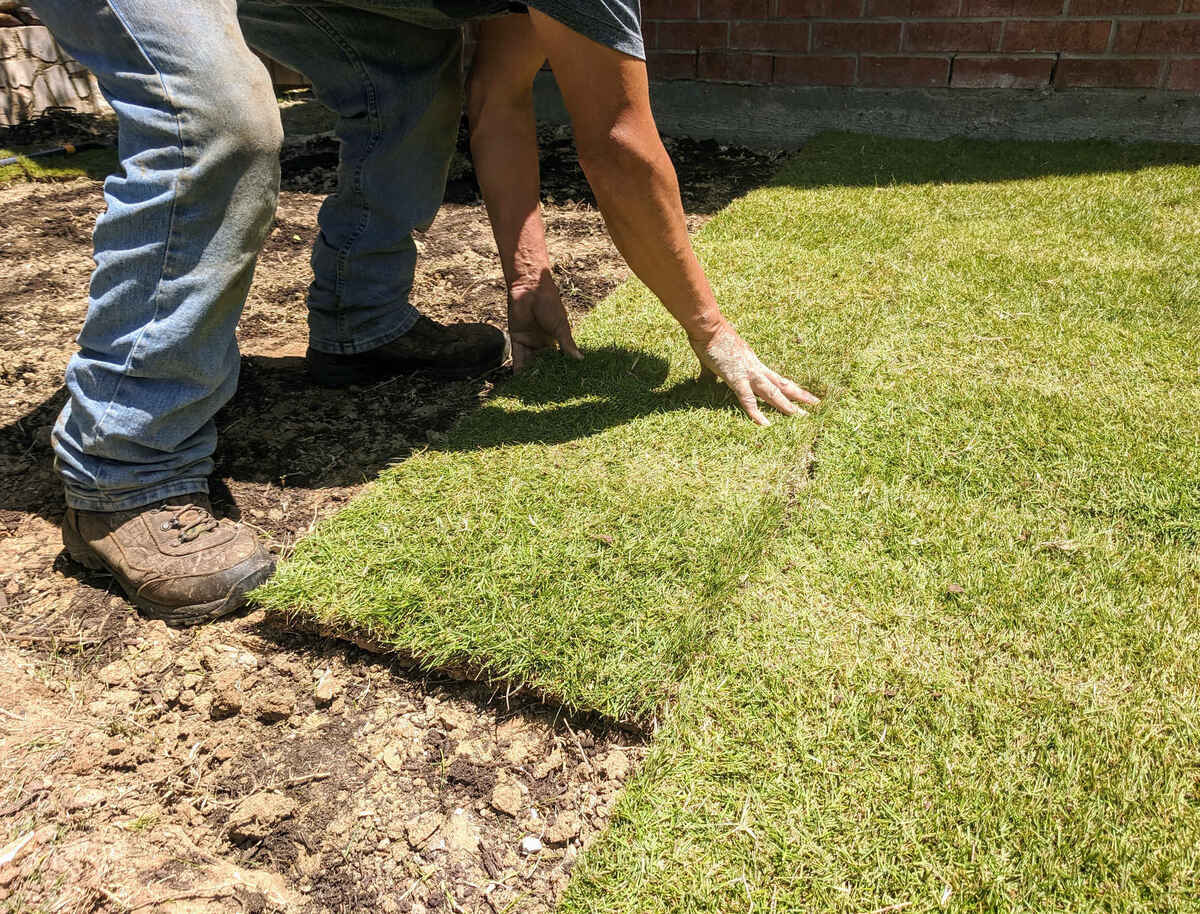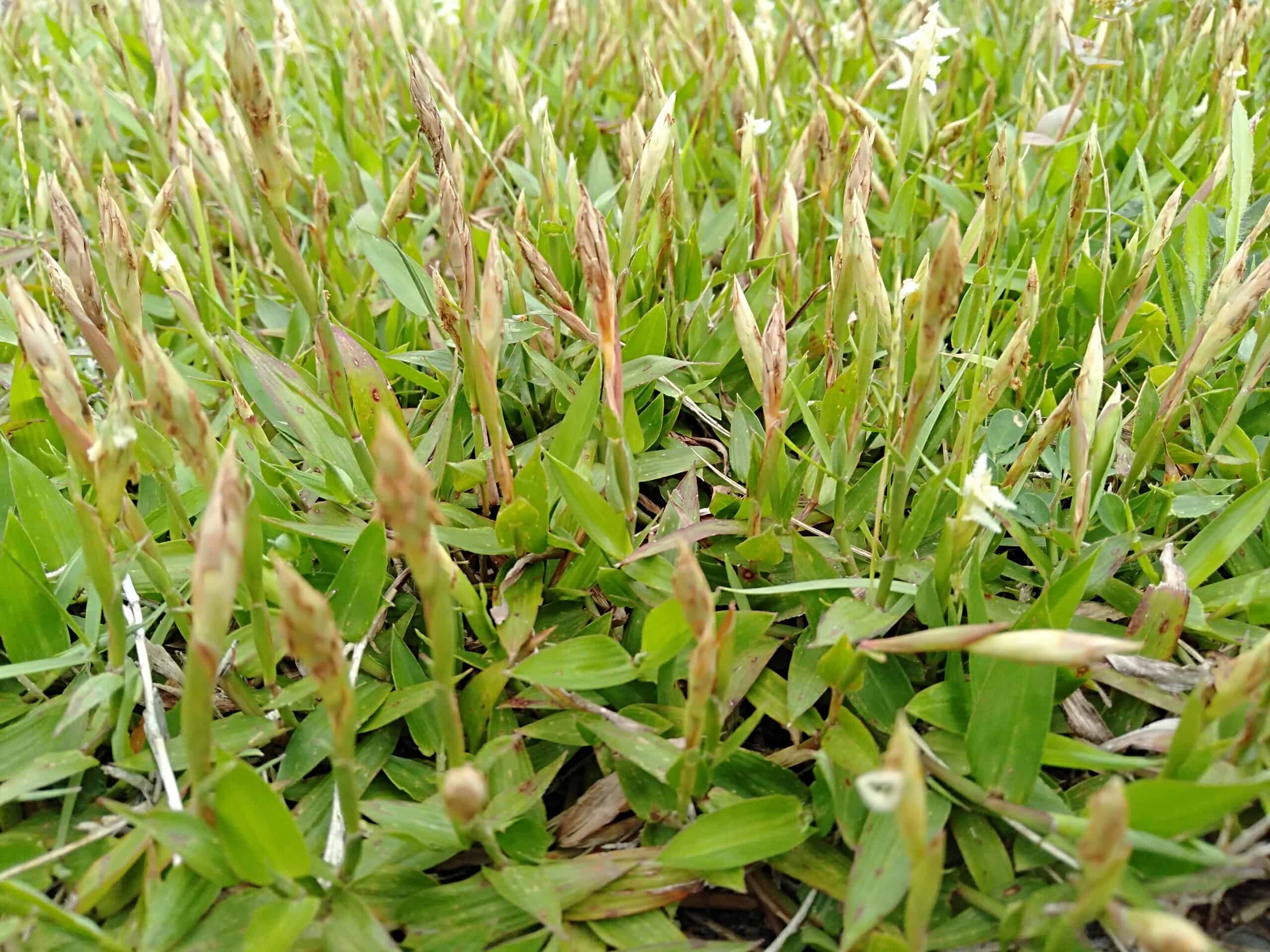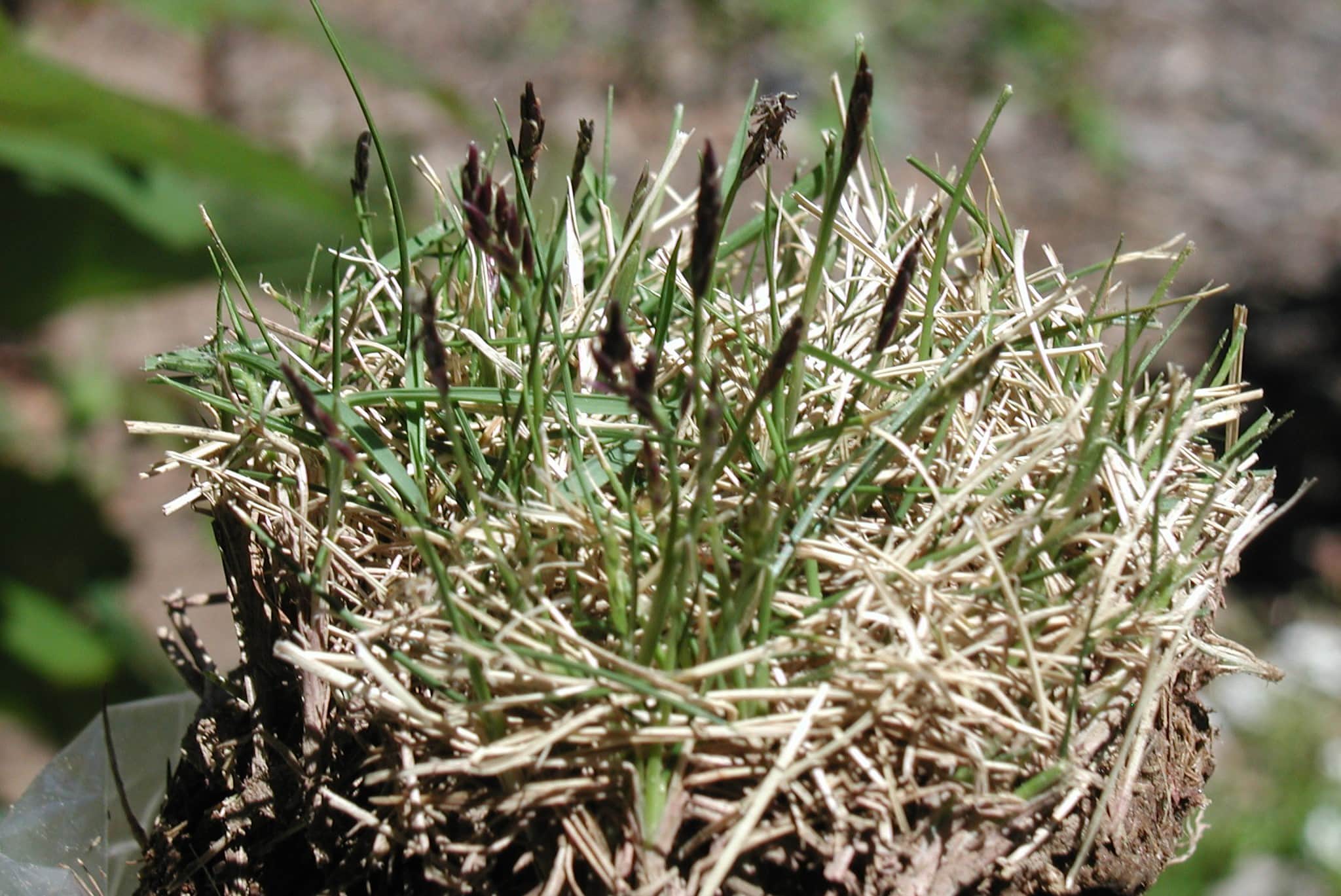Home>Garden Essentials>When To Plant Zoysia Seeds


Garden Essentials
When To Plant Zoysia Seeds
Modified: October 19, 2024
Looking to start a garden? Find out the best time to plant Zoysia seeds and get your garden blooming with lush, green grass.
(Many of the links in this article redirect to a specific reviewed product. Your purchase of these products through affiliate links helps to generate commission for Storables.com, at no extra cost. Learn more)
Introduction
When it comes to creating a lush and vibrant garden, having a beautiful lawn is often a top priority. If you’re looking to establish a new lawn or rejuvenate an existing one, planting zoysia seeds can be an excellent option. Zoysia grass is a warm-season grass that is known for its dense growth, tolerance to heat and drought, and resistance to pests and diseases. By investing a little time and effort in planting zoysia seeds, you can enjoy a stunning and resilient lawn for years to come.
However, successfully growing zoysia from seeds requires careful planning and execution. It’s important to consider various factors, such as the ideal planting time, soil preparation, and proper maintenance techniques. In this article, we will guide you through the process of planting zoysia seeds, ensuring that you achieve the best possible results.
Key Takeaways:
- Plant zoysia seeds in late spring to early summer when soil temperatures reach 70°F for optimal germination. Prepare the soil, water consistently, and provide post-germination care for a lush and resilient lawn.
- Consider sunlight, soil type, climate, traffic, and watering before planting zoysia seeds. Proper preparation and care can help overcome common challenges and maintain a beautiful zoysia grass lawn.
Read more: When To Plant Zoysia Grass
Factors to Consider Before Planting Zoysia Seeds
Before diving into the process of planting zoysia seeds, it’s important to consider a few key factors that can greatly impact the success of your lawn. By taking these factors into account, you can ensure that your zoysia seeds have the best possible conditions for germination and growth.
- Sunlight: Zoysia grass thrives in full sunlight. It requires at least 6-8 hours of direct sunlight each day to grow and spread properly. Before planting zoysia seeds, assess your lawn’s exposure to sunlight to ensure it meets this requirement.
- Soil Type: Zoysia grass is adaptable and can tolerate a range of soil types, from sandy to clayey. However, it grows best in well-draining soil with a pH between 6 and 7. Before planting, test your soil’s pH and amend it if necessary to create optimal growing conditions.
- Climate: Zoysia grass is known for its excellent heat and drought tolerance. It performs best in warm climates, such as the southern regions of the United States. If you live in a cooler climate, ensure that you select a zoysia grass variety that is suitable for your specific region.
- Traffic: Consider the amount of foot traffic your lawn will receive. Zoysia grass is a durable and resilient grass, but excessive foot traffic can still cause damage. If you anticipate heavy foot traffic, consider installing pathways or using other materials to protect your zoysia lawn.
- Watering: While zoysia grass is drought-resistant, it still requires regular watering to establish strong root systems. Before planting zoysia seeds, ensure that you have access to a reliable water source and are willing to commit to a watering schedule.
By considering these factors, you can set the stage for successful zoysia seed planting and ensure that your lawn thrives in the years to come.
Best Time to Plant Zoysia Seeds
The timing of planting zoysia seeds is crucial for their successful germination and establishment. Since zoysia grass is a warm-season grass, it is best to plant the seeds during the late spring to early summer when the soil temperatures consistently reach around 70°F (21°C) or higher.
Planting zoysia seeds too early, while the soil is still cool, can result in poor germination rates and weak growth. On the other hand, planting too late in the summer can make it difficult for the young seedlings to establish their roots before the cooler temperatures of fall set in.
In general, the ideal soil temperature for zoysia seed germination is between 70°F and 90°F (21°C and 32°C). It’s important to keep in mind that soil temperatures can vary depending on your geographical location and climate. Therefore, it’s recommended to use a soil thermometer to accurately determine the temperature and ensure it is optimal for zoysia seed germination.
Once you have determined that the soil temperature is suitable, it’s time to prepare the area for planting. Follow the steps below to ensure the best chances of success:
- Clear the area: Remove any existing vegetation, such as grass or weeds, from the planting area. This can be done by manually pulling them out or using herbicides, if necessary. Ensure that the area is clean and free of debris.
- Loosen the soil: Use a garden tiller, rake, or a hand cultivator to loosen the soil in the planting area. This will help create a loose and well-aerated bed for the zoysia seeds to establish their roots.
- Amend the soil: Test your soil’s pH level and amend it if necessary to create optimal growing conditions for zoysia grass. Most zoysia grasses prefer a pH between 6 and 7. Additionally, incorporating organic matter, such as compost, can improve the soil structure and nutrient content.
- Level the area: Use a rake or a leveling tool to ensure that the planting area is even and level. This will help prevent water pooling and ensure uniform growth of the zoysia grass.
- Sow the seeds: Follow the recommended seeding rate specified on the zoysia seed packaging. It’s important not to overseed, as overcrowding can inhibit proper growth. Broadcast the seeds evenly over the prepared soil.
- Water the area: Gently water the seeded area, ensuring that the soil is moist but not saturated. Keep the soil consistently damp during the germination period.
- Provide post-germination care: Once the zoysia seedlings begin to emerge, gradually reduce the frequency of watering and transition to a regular watering schedule. Water deeply but infrequently to encourage deep root growth.
By planting zoysia seeds at the optimal time and following these preparation and care guidelines, you can create a thriving and beautiful zoysia lawn that will be the envy of your neighborhood.
Preparation Before Planting Zoysia Seeds
Proper preparation of the planting area is essential for the successful establishment of zoysia seeds. By taking the time to prepare the soil and create favorable conditions, you can significantly increase the chances of a lush and healthy zoysia lawn. Here are the crucial steps to follow before planting zoysia seeds:
- Clear the area: Start by removing any existing vegetation, such as grass or weeds, from the planting area. It’s important to thoroughly clear the area to minimize competition for resources and ensure that the zoysia seeds have room to establish and grow.
- Test the soil: Obtain a soil testing kit or send a soil sample to a local agricultural extension office to determine the pH and nutrient levels of your soil. Zoysia grass typically thrives in slightly acidic to neutral soils with a pH range of 6 to 7. If your soil pH is outside this range, you may need to make amendments to create optimal growing conditions.
- Amend the soil: Based on the results of your soil test, add any necessary amendments to optimize soil fertility and structure. This may include adding lime to raise pH or sulfur to lower pH, as well as incorporating organic matter like compost to improve soil texture and nutrient content. Follow the recommendations from your soil test or consult with a gardening expert to ensure you’re making the appropriate amendments.
- Rake and level the soil: Use a rake or garden tiller to break up any compacted soil and remove rocks or debris. Raking the soil helps to create a smooth and level surface, which is essential for even seed distribution and uniform growth. Ensure that the soil is reasonably level without any noticeable slopes or depressions.
- Address drainage issues: Adequate drainage is necessary for zoysia grass to thrive. If the planting area has poor drainage, consider incorporating materials like sand or organic matter to improve it. Alternatively, you may need to install drainage systems or build raised beds to ensure proper water movement.
- Consider soil temperature: Zoysia grass prefers warm soil temperatures for optimal germination and growth. Therefore, if you’re planning to plant zoysia seeds, make sure that the soil temperature consistently reaches around 70°F (21°C) or higher. Soil thermometers are easily available at garden centers and can help you determine the optimal planting time.
By following these preparation steps, you’ll create an environment that is favorable for zoysia seed germination and establishment. Taking the time to properly prepare the soil sets a solid foundation for a healthy and beautiful zoysia lawn.
Plant Zoysia seeds in late spring or early summer when soil temperatures are consistently above 70°F. This will give the seeds the best chance of germinating and establishing a healthy lawn.
Planting Zoysia Seeds
Planting zoysia seeds is an exciting step towards establishing a beautiful and resilient lawn. By following proper planting techniques, you can maximize the germination rate and ensure even growth. Here’s a step-by-step guide on how to plant zoysia seeds:
- Timing: The best time to plant zoysia seeds is during late spring or early summer when the soil temperature consistently reaches around 70°F (21°C) or higher. Ensure that the soil is warm enough for optimal germination.
- Prepare the soil: Clear the planting area of any existing vegetation and weeds. Loosen the soil with a garden tiller or rake to create a loose and well-aerated bed for the seeds.
- Sow the seeds: Broadcast the zoysia seeds evenly over the prepared soil at the recommended seeding rate specified on the seed packaging. Avoid overseeding, as overcrowding can inhibit proper growth and development of the seedlings.
- Rake and lightly press the seeds: Use a rake to lightly rake the seeds into the soil. This helps ensure good seed-to-soil contact, which is essential for germination. Gently press the seeds into the soil using a lawn roller or by walking over the area to further improve seed contact.
- Water the area: After sowing the seeds, water the planting area thoroughly and deeply. Ensure that the soil is moist but not soaked. Continue to keep the soil consistently damp during the germination period.
- Maintain consistent moisture: Regularly water the seeded area to keep the soil consistently moist. Avoid overwatering, as it can lead to root rot and other issues. Aim for deep, infrequent watering to encourage strong root development.
- Monitor for emergence: After approximately 10 to 14 days, the zoysia seeds should start to germinate and small seedlings will begin to emerge. Be patient, as germination can take time and may vary based on environmental conditions.
- Transition to regular watering: Once the seedlings have emerged, gradually reduce the frequency of watering and transition to a regular watering schedule. Water deeply but infrequently to encourage deep root growth and drought tolerance.
It’s important to note that optimal growing conditions, including sunlight, soil quality, and proper watering, are essential for the successful establishment of zoysia seeds. By following these planting guidelines and giving your zoysia seeds the care they need, you’ll be one step closer to enjoying a lush and beautiful zoysia lawn.
Read more: When To Plant Zoysia Grass Plugs
Caring for Zoysia Seeds After Planting
After planting zoysia seeds, it’s important to provide proper care to ensure their successful germination and healthy growth. The following care guidelines will help you nurture your zoysia seedlings and establish a lush and thriving lawn:
- Watering: Water the seeded area regularly to keep the soil consistently moist during the germination phase. Aim for approximately 1 inch of water per week, either from rainfall or supplemental irrigation. Water deeply but infrequently to encourage deep root growth and drought tolerance.
- Mowing: Once the zoysia seedlings reach a height of about 2-3 inches, it’s time to start mowing. Set your mower to a height of around 1.5 to 2 inches, ensuring that you remove no more than one-third of the grass blade in a single mowing. Regular mowing helps promote lateral growth and maintains the overall health and appearance of the lawn.
- Fertilizing: Start fertilizing the newly established zoysia lawn approximately 6-8 weeks after planting. Use a slow-release nitrogen fertilizer specifically formulated for zoysia grass. Follow the manufacturer’s instructions and apply the fertilizer evenly over the entire area. Avoid excessive fertilization, as it can lead to thatch buildup and other problems.
- Weed control: Keep an eye out for weeds and take necessary actions to control them. Zoysia grass is known for its dense growth, which helps to naturally suppress weed development. However, if weeds do appear, hand-pulling or spot treatments with an appropriate herbicide can be effective in managing them. Consult with a gardening professional to identify the best weed control methods for your specific situation.
- Aeration: Perform regular core aeration on your zoysia lawn to improve soil compaction and promote healthy root growth. Aeration allows water, air, and nutrients to penetrate the soil more effectively, enhancing the overall health of the grass. Aim to aerate once or twice a year, preferably during the growing season.
- Overseeding: In areas where zoysia grass may thin out, consider overseeding with zoysia seeds or plugs during the spring or early summer. This helps rejuvenate the lawn and fill in any bare spots. Follow the same planting and care guidelines as for the initial seeding process.
- Regular maintenance: Maintain a regular lawn maintenance routine, including proper watering, mowing, and fertilization. Regularly remove debris, control pests, and address any issues promptly to keep your zoysia lawn healthy and vibrant.
By following these care tips, you can ensure that your zoysia seeds thrive and develop into a lush, resilient lawn. With time and proper maintenance, you’ll be able to enjoy the many benefits of a beautiful zoysia grass lawn.
Common Problems and Solutions
While zoysia grass is known for its resilience and ability to withstand various conditions, it can still face certain challenges. Understanding common problems that can occur with zoysia seeds and knowing how to address them can help you maintain a healthy and vibrant lawn. Here are some common problems and their corresponding solutions:
- Poor Germination: If you’re experiencing poor germination with your zoysia seeds, it could be due to factors like inconsistent watering, insufficient soil preparation, or planting at the wrong time. To address this issue, ensure that the soil is consistently moist but not saturated during the germination period. Double-check your soil preparation techniques, making sure the soil is loose and well-aerated. Plant zoysia seeds during the recommended planting time when the soil temperature is optimal.
- Thatch Buildup: Thatch, a layer of organic matter that accumulates between the soil and the grass blades, can become a problem in zoysia lawns. Excessive thatch buildup can prevent water and nutrients from reaching the roots. To manage thatch, regularly aerate the lawn to improve soil drainage and promote decomposition. Proper mowing practices, such as not cutting the grass too short or removing more than one-third of the grass blade, can also help prevent excessive thatch accumulation.
- Weed Infestation: Weeds can sometimes invade zoysia lawns, competing for resources and affecting the overall appearance. Regular maintenance practices, including proper mowing, watering, and fertilization, can help minimize weed growth. If weed problems persist, consider using selective herbicides specifically formulated for zoysia grass. Follow the instructions carefully to effectively control weeds while minimizing damage to the zoysia grass.
- Pest Damage: Zoysia grass is generally resistant to pests, but certain insects like armyworms, grubs, and chinch bugs can still pose a threat. Regularly inspect your lawn for signs of pest infestations, such as thinning patches or yellowing areas. If pests are detected, choose appropriate insecticides or contact a professional for targeted treatment options. Implementing proper lawn care practices, such as regular mowing and fertilization, can help make your lawn less susceptible to pest damage.
- Disease Susceptibility: While zoysia grass is known for its disease resistance, it is still susceptible to some common turf diseases, such as brown patch and large patch. Practicing good lawn care techniques, such as proper watering and appropriate fertilization, can help prevent the onset of diseases. If disease symptoms are observed, consult with a lawn care professional to identify appropriate treatment options, which may include fungicides or cultural practices like improving drainage and reducing thatch.
Remember, proactive lawn care practices, including regular maintenance, proper watering, and timely pest and disease management, can help prevent common problems and maintain the health and beauty of your zoysia lawn. By addressing any issues promptly and taking appropriate steps, you can enjoy a lush and thriving zoysia grass lawn for years to come.
Conclusion
Planting zoysia seeds is a rewarding endeavor that can result in a stunning and resilient lawn. By considering important factors such as sunlight, soil type, climate, traffic, and watering, you can create optimal conditions for the germination and growth of zoysia grass. It’s crucial to plant zoysia seeds during the appropriate time when the soil temperature is ideal for germination.
Before planting, prepare the soil by clearing the area, testing the soil’s pH, and making any necessary amendments. Rake and level the soil to create a smooth surface for even seed distribution. After sowing the seeds, water the area consistently to keep the soil moist during the germination period.
Once the zoysia seedlings emerge, transition to regular watering, mow the lawn at the appropriate height, and provide proper fertilization. Monitor for weeds, pests, and diseases and take action if necessary to maintain the health and beauty of your zoysia lawn.
While challenges such as poor germination, thatch buildup, weed infestation, pest damage, and disease susceptibility can arise, following proper care guidelines and addressing these issues promptly will help you overcome them. Regular maintenance, including proper watering, mowing, and fertilization, will contribute to the long-term success of your zoysia lawn.
By investing time and effort into planting zoysia seeds and caring for them properly, you can create a lush, vibrant, and resilient lawn that will be the envy of your neighborhood. Enjoy the beauty and benefits of your zoysia grass, knowing that you’ve created a welcoming and enjoyable outdoor space for years to come.
Frequently Asked Questions about When To Plant Zoysia Seeds
Was this page helpful?
At Storables.com, we guarantee accurate and reliable information. Our content, validated by Expert Board Contributors, is crafted following stringent Editorial Policies. We're committed to providing you with well-researched, expert-backed insights for all your informational needs.















0 thoughts on “When To Plant Zoysia Seeds”